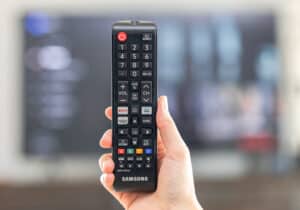
Over the years, iPhones have enjoyed massive popularity partly due to the phone’s reliability and the brand’s unique marketing strategies. iPhones can be obscenely expensive. For this reason, it’s essential to ensure you get your money’s worth in terms of lifespan when you purchase one.
If you consider purchasing an iPhone and wonder how long it will serve you before you have to replace it, the answer is at least three years. But this three-year timeline is not standard and depends on several factors. One of the factors determining the lifespan and usability of an iPhone is whether it can receive security and iOS updates from Apple.
This article covers an iPhone’s average lifespan, factors contributing to its longevity, and tips on caring for your iPhone.
Overview of an iPhone’s Lifespan
Even though an iPhone’s average lifespan is about 3 years, you might notice a decline in performance after nearly two years of use. Remember that a reduction in performance or battery life doesn’t necessarily indicate that your iPhone is dying. Technically, if your iPhone turns on, functions reasonably well, and can receive system updates, it’s still within its lifespan.
If well maintained and without any significant hardware issues, an iPhone can last up to 7 years. But, as earlier mentioned, the most crucial consideration for an iPhone’s eligibility and lifespan is receiving software updates. If you have an older iPhone that no longer supports updates, whether major revisions or minor security patches, the iPhone might as well be obsolete.
Overall, if your iPhone doesn’t suffer any significant drops, maintains healthy battery life, and can receive updates, it can serve you for up to 5 years.
Next, we detail factors affecting the lifespan of an iPhone and some ways to maintain an iPhone so it can serve you for longer.
Factors Determining the Lifespan of an iPhone
Below are some factors determining how long an iPhone lasts:
Software Update Eligibility
Apple releases software updates frequently to fix major and minor security problems and upgrade OS support and features. Even though an iPhone can still function without the latest iOS, it soon becomes susceptible to security breaches.
Over time, companies like Apple drop support for older iPhone models and instead focus on ensuring the newer updates work well on the latest models. At this point, you won’t receive any software support from Apple.
Based on this fact alone, the iPhone 13 series will likely last longer than the iPhone 6 series because it supports major iOS updates. Overall, if your iPhone can’t receive updates and you can’t order compatible hardware parts, it’s technically obsolete and has maximized its use.
Battery Health
It’s a fact that a good battery dictates the longevity of a device, and this is no different for iPhones. Typically, an iPhone battery will perform well for the first two years, after which you will start to see a decline.
A regular iPhone battery can retain at least 80 percent of its average power capacity at 500 charge cycles. Your iPhone’s battery health should still be optimum at around the two-year mark. Unfortunately, if you overcharge your iPhone frequently, subject it to extreme temperatures, and leave unused app features open, your battery health will diminish fast, and so will its lifespan.
If an iPhone is functioning well but has a poor battery, you can consider buying a new battery from Apple to extend the iPhone’s lifespan. A battery may not be as expensive as a new iPhone, but it might not be worth it if your iPhone’s overall functionality is poor.
Level of Physical Damage
Proper maintenance of a device can seem like a negligible factor in ensuring it serves you longer, but it is significant. There is a limit to how many times you can replace a broken screen, repair the water damage or fix a speaker. But, if you do minimal to zero hardware repairs on your iPhone, it is obvious it will serve you longer.
Tips To Make Your iPhone Last Longer
For the most part, ensuring your iPhone serves you longer comes down to proper physical and battery health maintenance. If you handle both of these factors well, your iPhone can last up to 7 years without significant issues.
Here are some tips for maintaining your iPhone’s battery health and good physical condition.
Avoid Overcharging Your iPhone
Every battery degrades over time, but there’s no reason your iPhone’s battery shouldn’t serve you for as long as it can. You can ensure your battery serves you well by avoiding maximizing your charge cycles sooner than necessary. To do this, avoid leaving the charger in long after the battery is fully charged.
Additionally, avoid keeping the iPhone at full charge or completely drained. Instead, maintain a battery percentage of 40-80 percent.
Turn Off Idle Apps
Features like Bluetooth, Background App Refresh, Push Notifications, and Location Settings drain the battery faster. To minimize charge cycles, it’s best to turn these apps off unless you need them.
Avoid Using Uncertified Chargers
Be careful when using uncertified lightning cables to charge your iPhone. Even if these cables fulfill the primary task of charging, their poor quality exposes your iPhone to the risk of short circuit and power surge damage. Additionally, they don’t have the same compatibility with your iPhone as a certified iPhone charger.
If you lose or misplace your charger, it’s best to replace it with an Apple-certified charger.
Invest in a Good iPhone Case
It doesn’t help to do your best to maintain your iPhone’s battery health if you don’t do the same for its overall physical condition. Invest in a good iPhone case to minimize the effects of the occasional drop and regular wear and tear.
Summary
As you’ve learned, an iPhone can last up to 7 years if you minimize physical damage and maintain good battery health. Some of the factors determining how long an iPhone lasts include software update eligibility and the level of physical damage.








